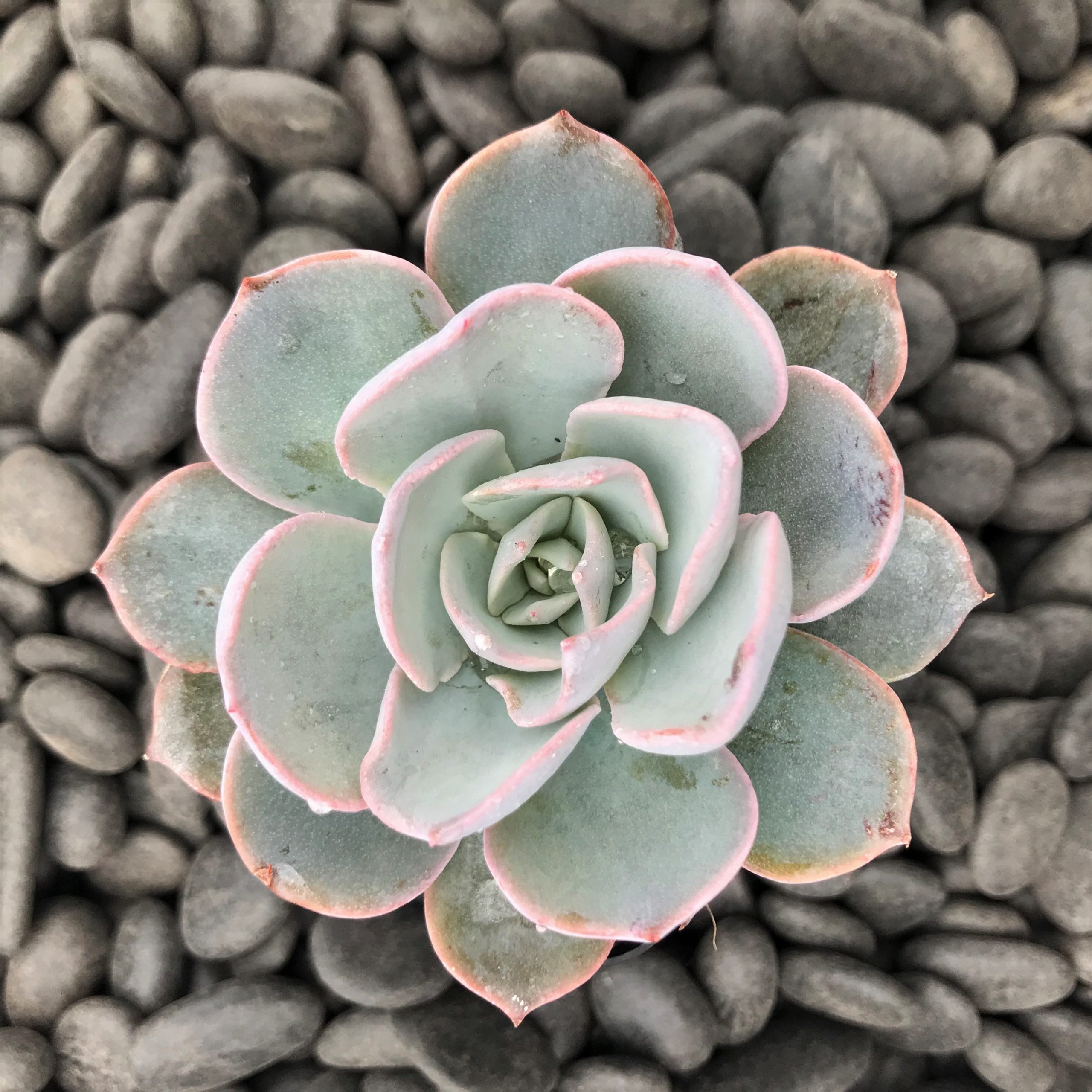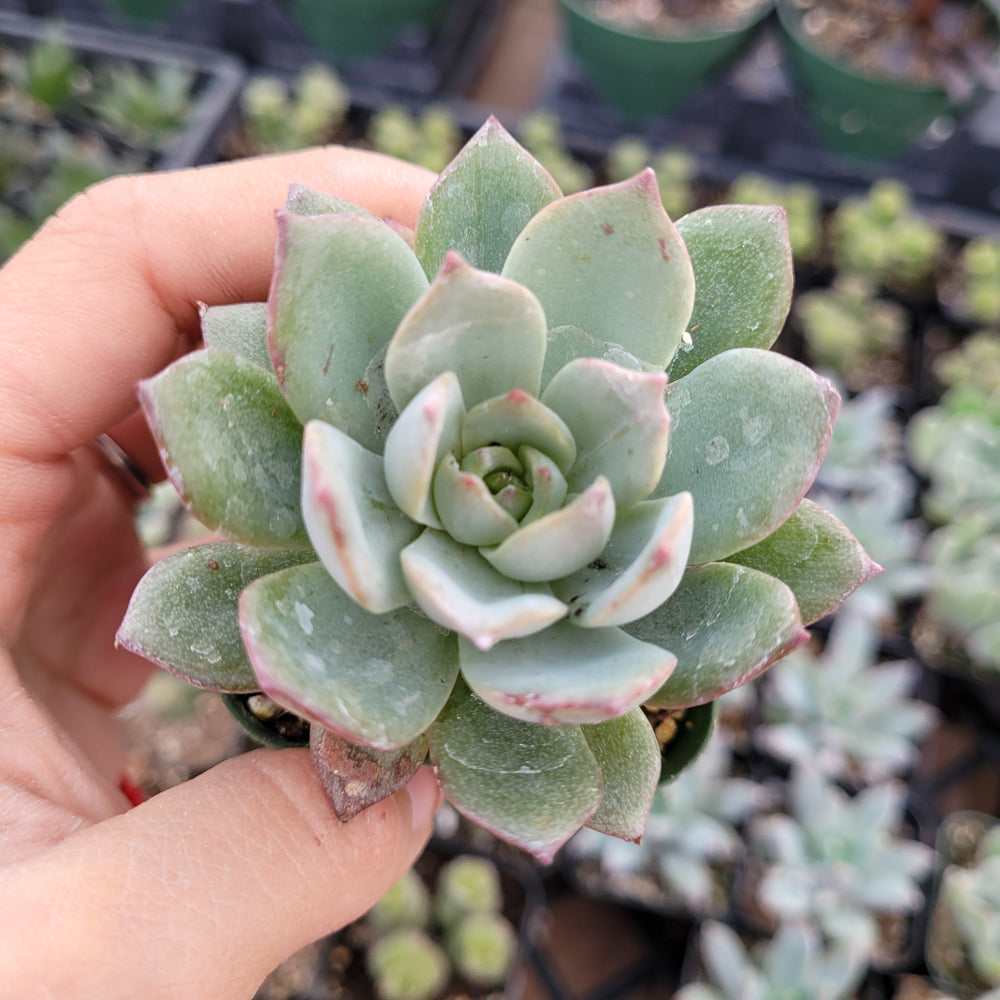Graying succulent leaves are a sign of excess moisture around the roots, which can be caused by overwatering or poorly draining soil. When transferred from a sunny to a shaded environment or in response to cold conditions, succulents may turn gray.
Learn more about the causes of your succulent’s graying and how to revitalize it by reading on.
Table of Contents
Succulent Turning Gray Too Much Moisture around the Roots
Succulents can become gray for a variety of causes, but the most frequent one is excessive wetness around the roots, which is brought on by:
- excess watering
- potting soils that drain slowly.
- pots without base drainage holes.
- The room’s humidity.
The succulent typically also exhibits the following signs if excessive moisture around the roots is the source of the gray leaves:
- leaves that are mushy and soft, as opposed to being hard.
- a slack appearance.
- Gray leaves might change to yellow, clear, or even black before falling off.
All succulents are native to dry regions and have evolved specifically to thrive in difficult environments with stony, grit-filled soil and infrequent rainfall.
Because succulents are extremely susceptible to overwatering, it is crucial to recreate the circumstances of their natural environment when growing them, including the ideal watering schedule and well-draining, grit soil.
Let the soil partially dry out in between waterings to properly water succulents and prevent the leaves from turning gray.
Since this mimics their natural watering circumstances in their original habitat, which involve a tremendous downpour of rain followed by a period of drought, succulents flourish when the soil is extensively wet and then allowed to dry out entirely.
If you are giving your succulent plant more water than once every two weeks, you are probably overwatering it, which is why the leaves are turning gray as a symptom of stress.
soils that drain slowly.
Gray leaves and excessive moisture around the roots are caused by more than just overwatering your succulent; sluggish draining soils are another issue.
In rocky and hillside areas with porous soil that drains fast, succulents frequently flourish.
Long-term exposure to damp soil can mimic the effects of overwatering and lead to root rot, which raises the likelihood of your succulent’s leaves turning gray as a symptom of stress.
pots lacking in drainage
Always plant succulents in containers with drainage holes at the bottom so that any excess water may drain out and the soil can dry.
It’s crucial to make sure that any tray or saucer you use underneath your pot to prevent water from pouring inside your home is periodically empty so that the soil can properly dry out in between watering sessions.
When sold, succulents occasionally come with a beautiful outer pot without drainage holes and a normal plastic pot with drainage holes.
Your drought-tolerant desert plant suffers as a result from water pooling around the roots and roots being buried, which could result in the leaves becoming gray.
Make sure that roots or compacted soil do not clog the drainage openings in the base, which could hinder drainage.
areas with a lot of humidity
Succulents have a unique ability to thrive in dry environments. Because they prefer the lower humidity found in deserts and arid mountainous regions, they cannot tolerate high levels of humidity.
At different times of the day, your home’s bathrooms and kitchen may be particularly humid.
Humidity slows down the rate of transpiration, or the loss of water from the leaves, which is how succulents regulate their moisture levels. This helps the leaves stay strong and healthy and prevents stress from having too much water in the soil.
How to Revive Succulents with Gray Leaves
Your succulent can dry out from its previously overwatered state and return to its ideal moisture balance with a watering cycle that suits it, well-draining soil, pots with sufficient drainage, and lower humidity.
This ought to assist your succulent’s leaves in recovering from their gray look and regaining their green hue.
However, if the leaves of your succulent start to turn black or acquire brown spots, I advise taking a cutting or propagating a leaf from a healthy section of the plant since if the rot starts to appear on the leaves, it could spread and kill the succulent.
Succulent propagation is relatively simple and a terrific technique to generate extra plants for no additional cost. Watch this enlightening YouTube video to learn how to multiply succulents:
Succulents Turn Gray due to Lack of Sun and Cold temperatures
Some kinds, like Jade plants, react to sunlight by turning red in order to avoid sunburn. The sharp change in light intensity that occurs when something is moved from full sun to shade can make the succulent leaves appear somewhat gray.
– Color – of leaves, flowers or stems.undrainable pots
In order to allow excess water to drain out the bottom and allow the soil to dry, succulents should always be planted in containers with drainage holes in the base.
In order for the soil to properly dry out between watering sessions, it is crucial to make sure that any tray or saucer you use underneath your pot to prevent water from pouring into your home is routinely emptied.
When sold, succulents may occasionally be packaged in two different pots: a beautiful outer pot with no drainage holes and a normal plastic pot with drainage holes.
Your drought-tolerant desert plant suffers as a result, with the potential for graying leaves when water pools around the base and saturates the plant’s roots.
Key Takeaways:
- As compacted soil or a tangle of roots may obstruct drainage holes in the base, take care to avoid this.
- humidity-filled spaces
- Particularly suited to thriving in dry environments are succulents. As a result, they cannot tolerate high levels of humidity since they prefer the lower levels seen in deserts and dry mountainous regions.
- At different times of the day, the humidity levels in your home might vary greatly in areas like the kitchen and bathroom.


